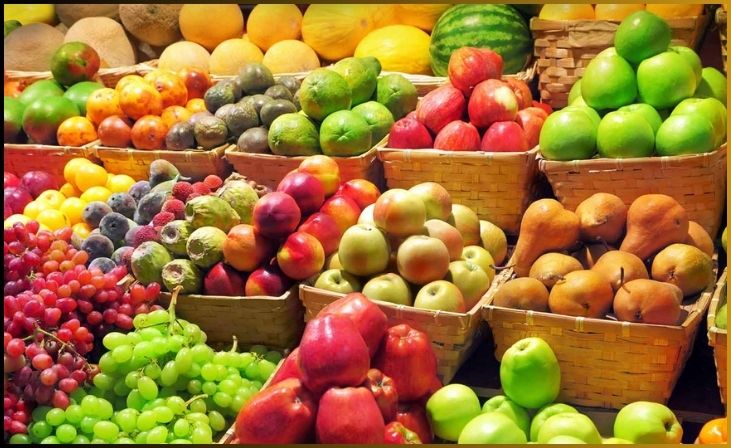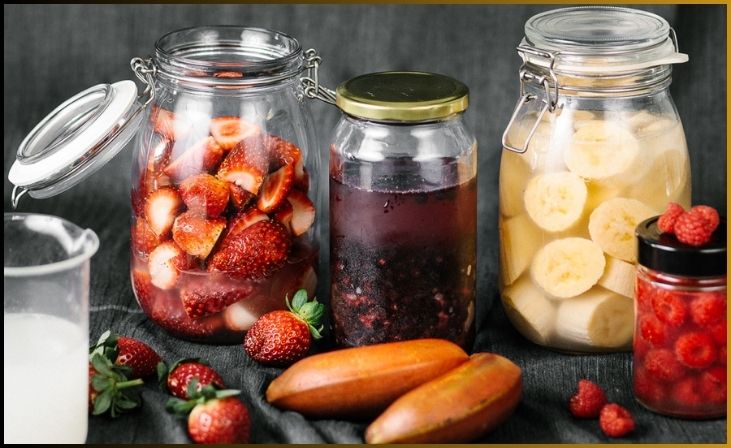In the realm of culinary exploration, fermenting fruit stands out as a time-honored practice that marries preservation with flavor enhancement. The allure of transforming fresh, vibrant fruits into probiotic-rich delicacies has ignited a resurgence of interest in home fermentation. Whether you’re a seasoned fermenter or just dipping your toes into the world of fermentation, unlocking the secrets to successfully fermenting fruit can open up a world of gastronomic possibilities.
In this blog post, we delve into four indispensable tips that will guide you on the path to mastering the art of fermenting fruit. From selecting the right fruits to maintaining a pristine fermentation environment, controlling crucial factors, and infusing creative flavors, these tips will empower you to create delightful, nutrient-packed fermented fruits that tantalize your taste buds. Join us as we embark on a journey through the fascinating and delicious realm of fruit fermentation, where tradition meets innovation for a fruitful culinary experience.
Table of Contents
ToggleTips for Fermenting Fruit
1. Choose the Right Fruits

Selecting the right fruits is the foundation of successful fermentation. Not all fruits are well-suited for the fermentation process, and some may yield better results than others. Ideal candidates for fermentation are those with a balance of sweetness and acidity. Berries, apples, pears, grapes, and stone fruits like plums and peaches are excellent choices.
It’s crucial to use fresh, high-quality fruits free from pesticides and chemicals. The natural sugars in fruits serve as a source of food for the fermenting microorganisms, while the acidity contributes to a balanced and vibrant flavor. Consider experimenting with different fruit combinations to create unique and interesting flavor profiles.
Also Read- How to Ferment without Whey or Starter
2. Maintain Proper Hygiene and Sanitation
Successful fermentation hinges on maintaining a clean and sterile environment. Unwanted bacteria or contaminants can compromise the fermentation process and result in undesirable flavors or spoilage. To ensure success, follow these hygiene and sanitation tips:
a. Sterilize Equipment: Thoroughly clean all fermentation equipment, including jars, lids, and utensils, before use. Sterilizing with hot water or using a mild bleach solution helps eliminate potential contaminants.
b. Wash Fruits Carefully: Wash your fruits thoroughly to remove any residues of pesticides, dirt, or unwanted microorganisms. This step is critical, as the fermentation process amplifies existing flavors, including any undesirable ones.
c. Use Clean Hands: When handling fruits and preparing them for fermentation, ensure your hands are clean. Contaminated hands can introduce unwanted bacteria into the mix.
d. Maintain a Clean Environment: Keep your fermentation area clean and well-ventilated. Avoid cross-contamination by separating your fermentation projects and regularly cleaning surfaces.
By prioritizing cleanliness and sanitation, you create an environment conducive to the growth of beneficial microorganisms, resulting in a successful fermentation process.
3. Control Fermentation Conditions

Fermentation is a delicate dance between microorganisms, time, and environmental conditions. To achieve the desired flavors and textures in your fermented fruit, it’s crucial to control the fermentation process carefully.
Don't just scroll, subscribe!
BuzzTrail's unique web-stories are the cure for boredom you've been waiting for.
a. Temperature Control: Different fruits thrive in specific temperature ranges. Generally, a temperature range of 60-75°F (15-24°C) is suitable for most fruit fermentations. Extreme temperatures can slow down or accelerate the fermentation process, impacting the final product’s taste and texture.
b. Monitor Air Exposure: Exposure to air can lead to oxidation and spoilage. Ensure that your fruit is fully submerged in the brine or liquid to create an anaerobic environment. Consider using fermentation weights or other techniques to keep fruits beneath the liquid surface.
c. Patience is Key: Fermentation is a gradual process that takes time. Be patient and allow the microorganisms to work their magic. Taste the fruit periodically to gauge its progress and stop the fermentation when it reaches your desired level of flavor.
d. Experiment with Sugar and Salt Levels: The ratio of sugar to salt in your brine can influence the fermentation process. Experiment with different ratios to find the perfect balance for your taste preferences. Keep in mind that higher sugar concentrations can result in a sweeter end product, while increased salt levels can enhance the savory notes.
For More- 4 Ways To Ferment Vegetables Without Salt
4. Get Creative with Flavor Additions
While the natural flavors of fermented fruit can be incredibly satisfying, don’t hesitate to get creative with additional flavorings. Experimenting with herbs, spices, and other complementary ingredients can elevate your fermented fruit to new heights.
a. Herbs and Spices: Add depth and complexity to your fermented fruit by incorporating herbs and spices. Cinnamon, cloves, ginger, and mint are popular choices that pair well with a variety of fruits. Experiment with different combinations to discover your favorite flavor profiles.
b. Sweeteners: Enhance the sweetness of your fermented fruit by adding natural sweeteners like honey or maple syrup. These additions not only contribute sweetness but also bring distinct flavors to the mix.
c. Alcohol Infusions: Elevate your fermented fruits by introducing alcohol infusions. Spirits like rum, brandy, or even wine can add richness and complexity to the final product. Be mindful of the alcohol content, as excessive amounts may inhibit fermentation.
d. Citrus Zest: Citrus zest can brighten the flavors of fermented fruit and add a zesty kick. Consider incorporating orange, lemon, or lime zest for a burst of freshness.
Conclusion
Fermenting fruit is a rewarding and versatile culinary skill that allows you to create unique, probiotic-rich treats bursting with natural flavors. By choosing the right fruits, maintaining proper hygiene, controlling fermentation conditions, and experimenting with creative flavor additions, you can unlock the full potential of fermented fruit in your kitchen. Whether you’re crafting a simple apple chutney or a complex berry and herb medley, these tips will guide you towards successful fruit fermentation, providing a delicious and healthful addition to your culinary repertoire. So, roll up your sleeves, gather your favorite fruits, and embark on a fermentation journey that will tantalize your taste buds and nourish your body.
FAQs
Can I ferment any type of fruit?
Can I ferment any type of fruit?
While many fruits are suitable for fermentation, it’s essential to choose those with a good balance of sweetness and acidity. Berries, apples, pears, grapes, and stone fruits like plums and peaches are excellent candidates. Experimenting with different fruit combinations can lead to exciting and unique flavor profiles.
What’s the significance of cleanliness in fruit fermentation?
What’s the significance of cleanliness in fruit fermentation?
Maintaining a clean and sterile environment is crucial for successful fermentation. Any contaminants can compromise the process and result in undesirable flavors or spoilage. Make sure to sterilize equipment, wash fruits thoroughly, use clean hands, and keep the fermentation area clean to create an ideal environment for beneficial microorganisms to thrive.
How long does fruit fermentation take?
How long does fruit fermentation take?
The duration of fruit fermentation can vary based on factors like temperature, fruit type, and desired flavor. Generally, it can take anywhere from a few days to several weeks. It’s essential to be patient and monitor the process by tasting the fruit periodically until it reaches the desired level of flavor.

